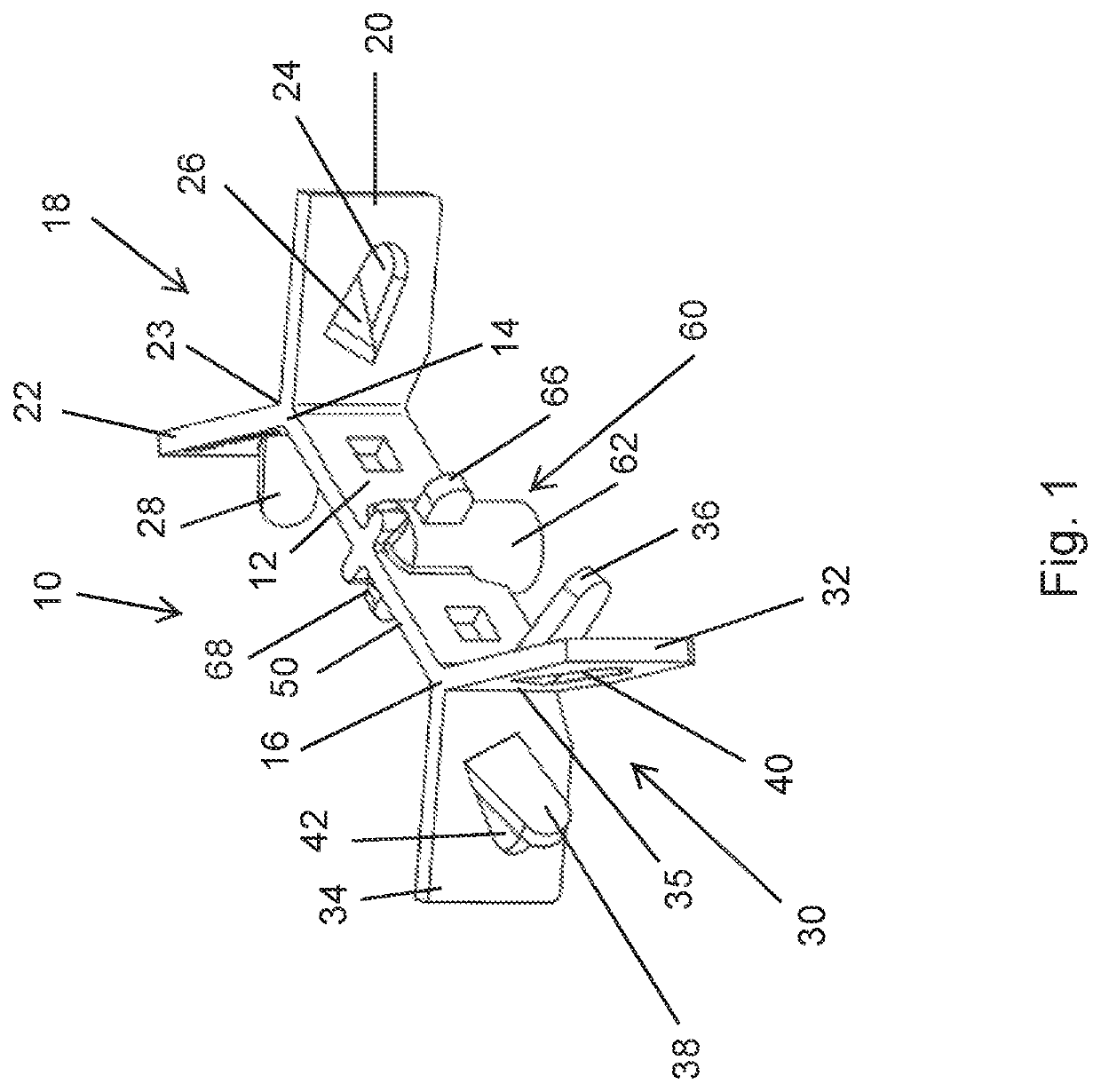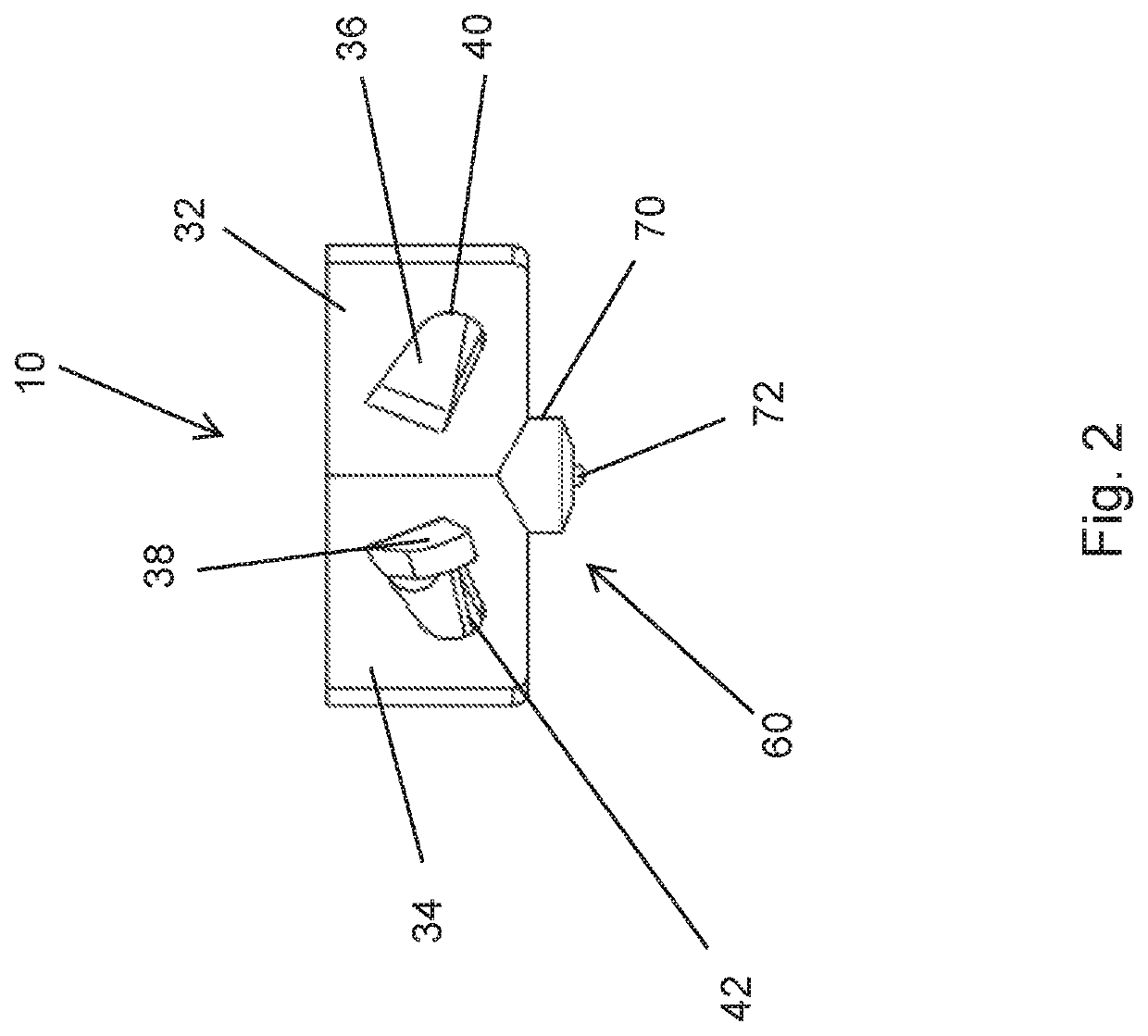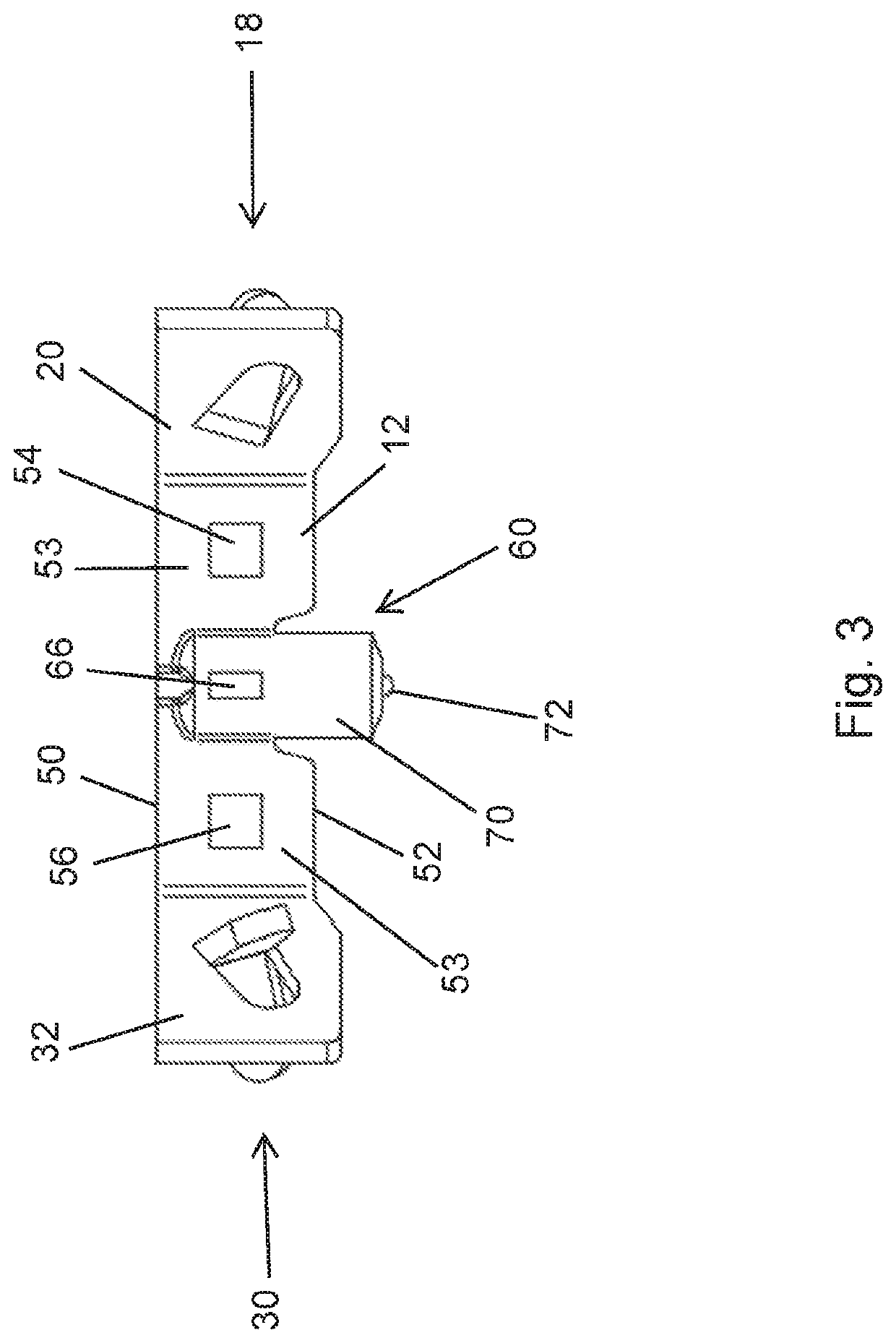Refractory anchor
a refractory anchor and monolithic technology, applied in the field of anchors, can solve the problems of affecting the uniform application of refractory materials in the vessel wall, and being relatively laborious
- Summary
- Abstract
- Description
- Claims
- Application Information
AI Technical Summary
Benefits of technology
Problems solved by technology
Method used
Image
Examples
Embodiment Construction
[0016]The terms “upwardly,”“downwardly,”“top,”“bottom,” and similar terms of orientation as used herein are with reference to the anchor as it is depicted in FIG. 3. Thus, “top” or “upwardly” refers to the direction towards the top of the page on FIG. 3 and “bottom” or “downwardly” refers to the direction towards the bottom of the page on FIG. 3. This orientation is for the purposes of describing the invention and does not require that the anchor, in practice, be facing such a direction. It will be understood by those skilled in the art, that the “bottommost” surfaces of the anchor may be sideways or even facing upwardly when positioned in a vessel.
[0017]The refractory anchor of the present invention is a solid, monolithic structure which can be made by any number of casting techniques used in forming metal parts such as, for example, lost-wax casting (investment casting), plaster mold casting, sand casting, etc. Methods of casting metal parts are well known to those skilled in the ...
PUM
| Property | Measurement | Unit |
|---|---|---|
| obtuse angles | aaaaa | aaaaa |
| obtuse angles | aaaaa | aaaaa |
| obtuse angles | aaaaa | aaaaa |
Abstract
Description
Claims
Application Information
 Login to View More
Login to View More - R&D
- Intellectual Property
- Life Sciences
- Materials
- Tech Scout
- Unparalleled Data Quality
- Higher Quality Content
- 60% Fewer Hallucinations
Browse by: Latest US Patents, China's latest patents, Technical Efficacy Thesaurus, Application Domain, Technology Topic, Popular Technical Reports.
© 2025 PatSnap. All rights reserved.Legal|Privacy policy|Modern Slavery Act Transparency Statement|Sitemap|About US| Contact US: help@patsnap.com



